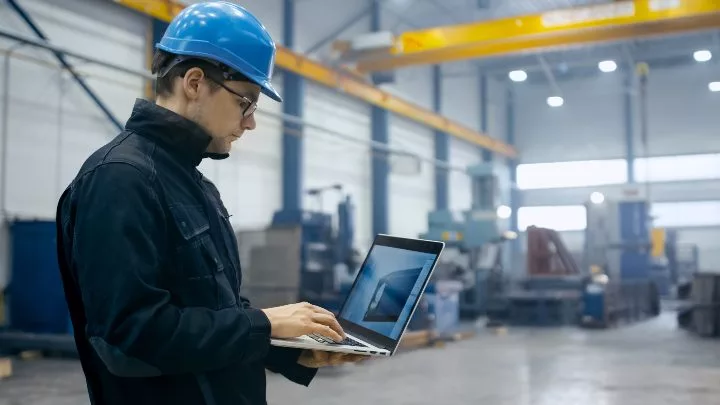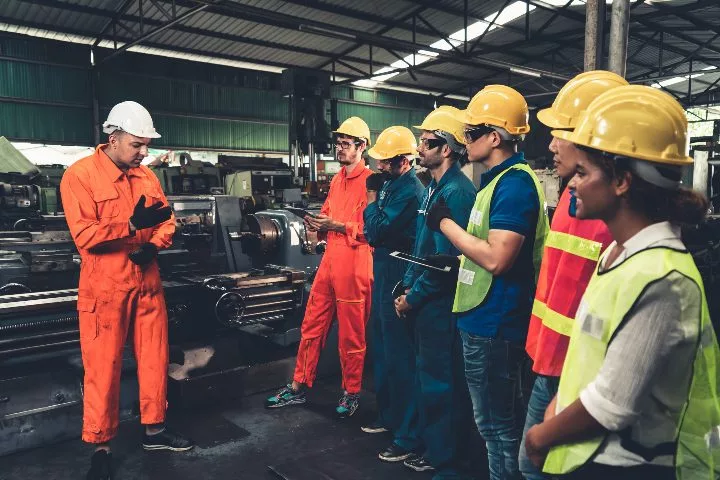Maintenance management is a systematic approach to managing and maintaining the physical assets of an organization. It involves tracking equipment, workers, contractors, and associated costs to ensure that everything runs smoothly and efficiently. By implementing maintenance management systems, companies can significantly reduce repair and inspection costs while ensuring safety for both employees and machinery. These systems help maintain productivity and prevent unexpected failures that could lead to costly downtime. Maintenance management software plays a crucial role in minimizing equipment failure and production downtime. It also helps track preventive maintenance schedules, which are essential for keeping operations running smoothly. While practices may vary across industries, the primary goal of any maintenance management system is to reduce waste and optimize resource use. By ensuring that all equipment is reliable and available at all times, these systems contribute to the overall efficiency of an organization. Today, this is achieved through a combination of manual practices, computerized software, and advanced technologies that work together to maximize efficiency and performance. For individuals outside the maintenance industry, equipment failure might be just a minor inconvenience—like waiting longer for the subway or experiencing a brief power outage. However, for large organizations, unplanned equipment failure can have serious financial consequences. According to Aberdeen Strategy and Research, unplanned equipment downtime can cost a company an average of $260,000 per hour in lost revenue. This is exactly what maintenance management systems aim to prevent. Industries such as transportation, IT, engineering, oil and gas, energy, and healthcare rely on maintenance management software to avoid significant financial losses. Beyond cost savings, these systems enhance safety, improve efficiency, and support regulatory compliance. Here are five key reasons why maintenance management is so important: Effective maintenance management prevents unplanned equipment downtime, saving companies thousands or even millions in lost revenue. With proper planning, most downtime becomes predictable, allowing teams to schedule repairs during off-hours or low-demand periods. Regular maintenance ensures that equipment lasts longer, reducing the need for frequent replacements. This not only saves money but also minimizes waste. Well-maintained equipment can outlast multiple poorly maintained counterparts. When equipment is functioning properly, employees can focus on more critical tasks rather than dealing with maintenance issues. This leads to a more efficient and less stressful work environment. Maintenance management systems help companies stay compliant with industry regulations by accurately recording inspections and generating necessary reports. This reduces the risk of fines and legal issues. In many industries, faulty equipment can lead to serious injuries or even fatalities. Proper maintenance management and safety training help prevent accidents, protecting both workers and the public. There are various types of maintenance management systems, each suited to different needs and levels of complexity. Here are five common types, from simplest to most advanced: This is the most basic type, where equipment is used until it breaks down. While it was common in early industrialization, it is now considered inefficient and expensive. This involves scheduled maintenance based on time intervals, such as daily, weekly, or monthly checks. While effective, it is not always the most efficient method. This uses sensors and monitoring tools to assess the condition of equipment. Alerts are sent when issues are detected, allowing for timely intervention. Using data analytics and machine learning, predictive maintenance forecasts potential failures before they occur. This proactive approach helps avoid costly breakdowns. The most advanced type, prescriptive maintenance goes beyond prediction by recommending specific actions to address potential issues. This makes maintenance more efficient and effective. In some cases, maintenance must be deferred due to limited resources, but prioritizing urgent tasks ensures that critical systems remain operational. Maintenance inspections are a vital part of any maintenance management system. Whether conducted manually or using drones, these inspections help identify issues before they become major problems. There are several types of maintenance inspections, including: Safety inspections ensure that all processes are safe for workers. They include checking first-aid kits, fall protection systems, and other safety measures. These simulate equipment failure to test backup systems and ensure they function correctly in case of an emergency. Interior inspections check for wear and tear inside buildings, including air filters, smoke alarms, and plumbing issues. Exterior inspections look for damage to windows, walls, roofs, and other external structures, ensuring the building remains safe and functional. Drones are increasingly used in maintenance inspections because they are safer and more efficient. They can access hard-to-reach areas and provide high-quality data. For example, the Elios 3 drone uses LiDAR technology to create real-time 3D maps, making inspections in confined spaces much easier. While drones may have a high upfront cost, their long-term benefits include reduced liability, lower inspection costs, and improved data accuracy. [Case study: Elios 3's 3D Mapping Helps City of Lausanne in Water Department Inspections] Maintenance management software is being used successfully across various industries. Here are a few examples: Restaurants rely on regular maintenance of kitchen equipment to ensure food safety and service quality. One McDonald’s franchise owner reported a dramatic reduction in repair time after implementing a CMMS. In construction, equipment failure can lead to significant delays and costs. Effective maintenance management ensures that equipment is safe and operational, supporting project timelines and budgets. Hotels and resorts face numerous maintenance challenges, from plumbing to elevators. A hotel chain saw a significant improvement in productivity after adopting a CMMS. Other industries, such as manufacturing, healthcare, and agriculture, also benefit from well-implemented maintenance management systems. There are many types of maintenance management software available, each tailored to different business needs. Here are some popular options: UpKeep offers a suite of tools for managing maintenance tasks. It focuses on automation and document consolidation, making it ideal for businesses looking for a modern CMMS solution. Aptean provides EAM and OEE software designed for seamless integration with other enterprise systems. It is widely used in industries like healthcare, logistics, and energy. ValueKeep streamlines maintenance activities with features like inventory management and real-time reporting. It helps reduce costs and improve asset uptime. Limble is known for its user-friendly interface and ability to reduce administrative tasks. It supports multiple languages and offers customizable reports. FMX provides asset management solutions tailored for schools, non-profits, and religious organizations. It helps streamline workflows and improve budget efficiency. If you're considering a career in maintenance management, you'll find diverse opportunities across industries like healthcare, manufacturing, and construction. Maintenance managers have varied responsibilities, including budgeting, staff management, and ensuring compliance with regulations. They also play a key role in reporting and analyzing maintenance data. The average annual salary for a maintenance manager is around $80,000, though this can vary based on location and industry. Entry-level positions typically start at $55,000, while experienced professionals can earn over $100,000 annually. Cooling Evaporator Cooling Evaporator Xinxiang Yukun Refrigeration Technology Co.Ltd , https://www.yukunevaporator.comWhat Is Maintenance Management?

Why Is Maintenance Management Important?

1. Minimizes Equipment Downtime
2. Extends Equipment Lifespan
3. Increases Productivity
4. Ensures Regulatory Compliance
5. Enhances Safety
Types of Maintenance Management

1. Run-to-Failure Maintenance
2. Time-Based Maintenance
3. Condition-Based Maintenance
4. Predictive Maintenance
5. Prescriptive Maintenance
Maintenance Inspections

1. Safety Inspections
2. Failure-Finding Inspections
3. Building Interior Inspections
4. Building Exterior Inspections
Drones and Maintenance Inspections
Examples of Maintenance Management
1. Maintenance Management in Restaurants
2. Maintenance Management in Construction
3. Maintenance Management in Hospitality
Maintenance Management Software

1. UpKeep
2. Aptean
3. ValueKeep
4. Limble
5. FMX
Maintenance Manager Jobs

Maintenance Manager Salary